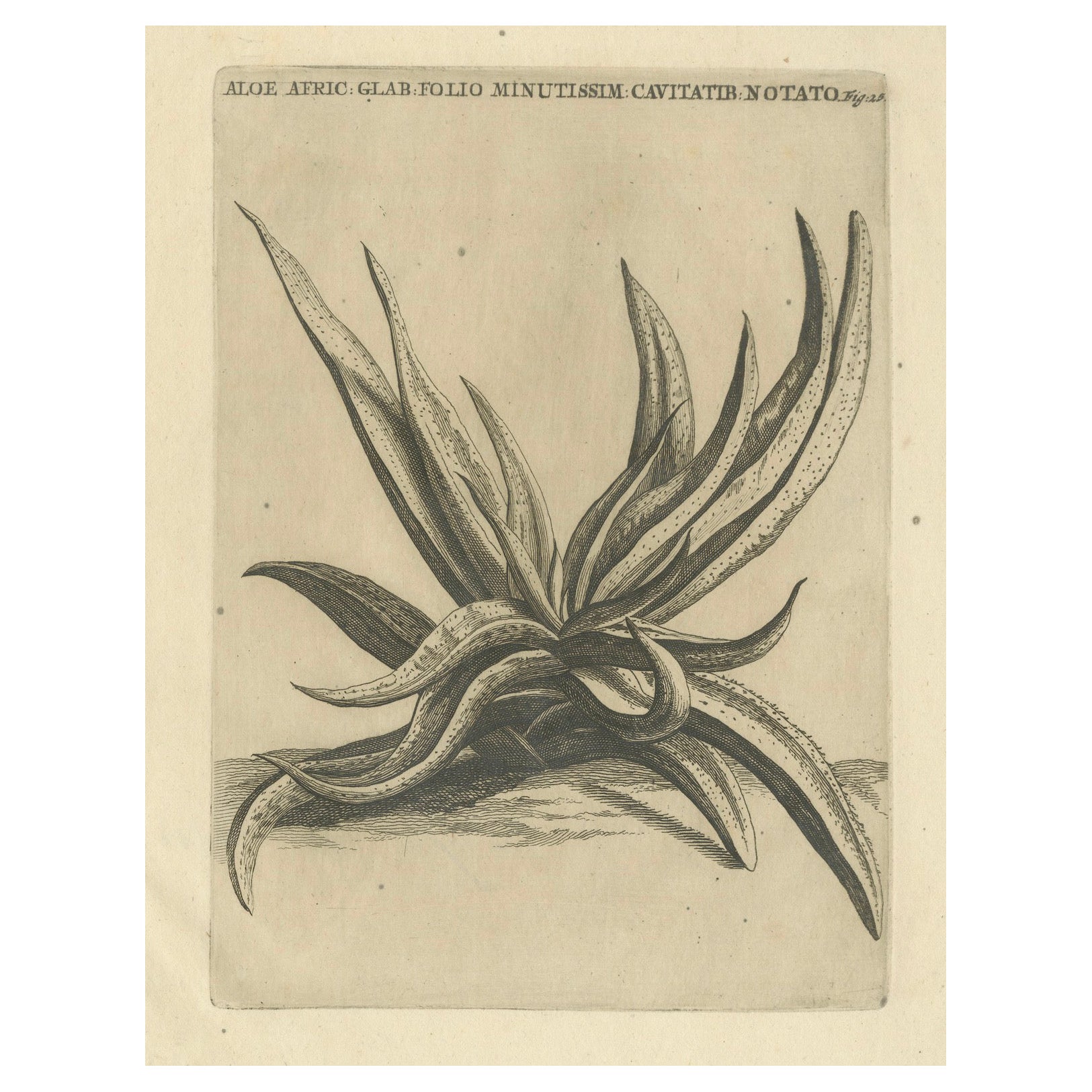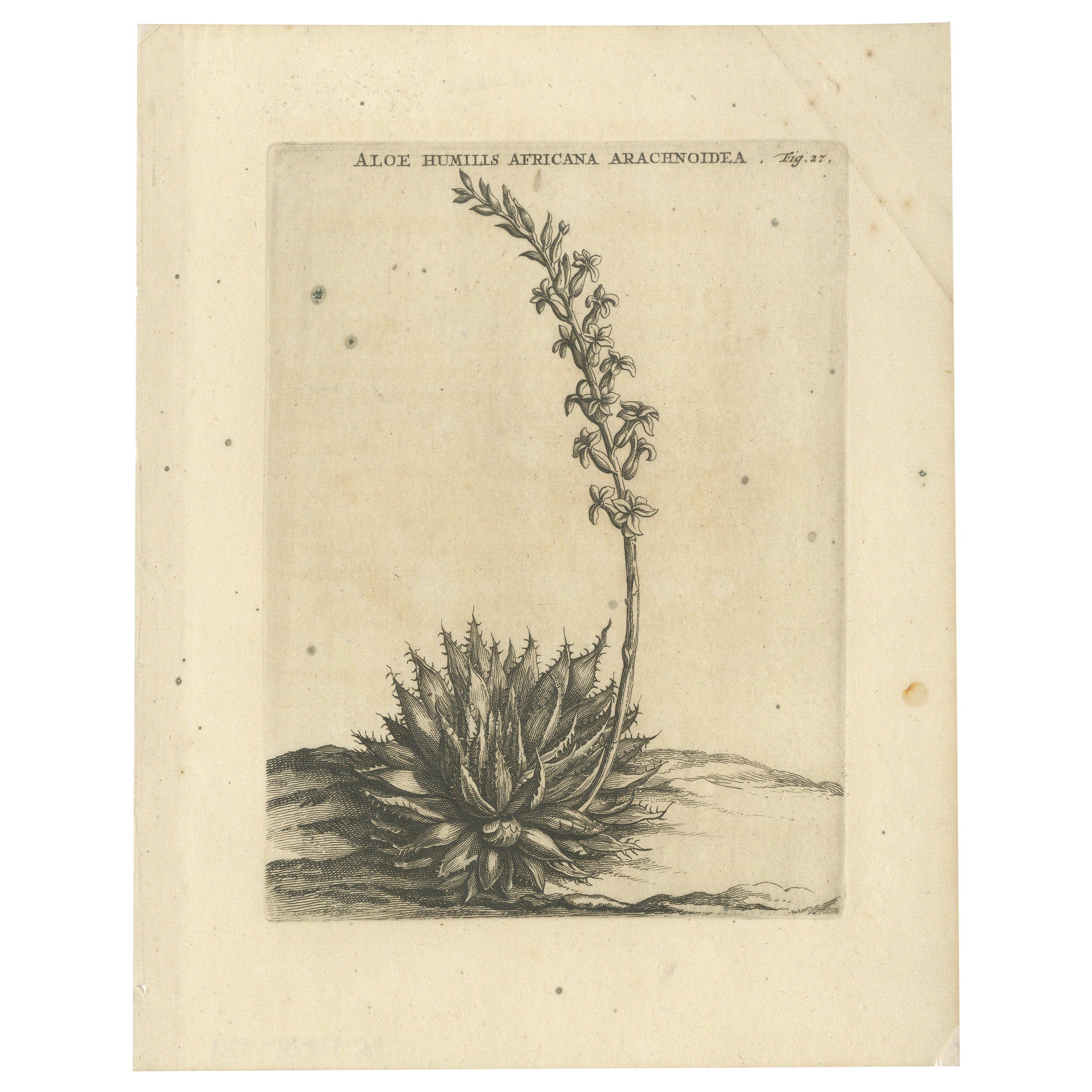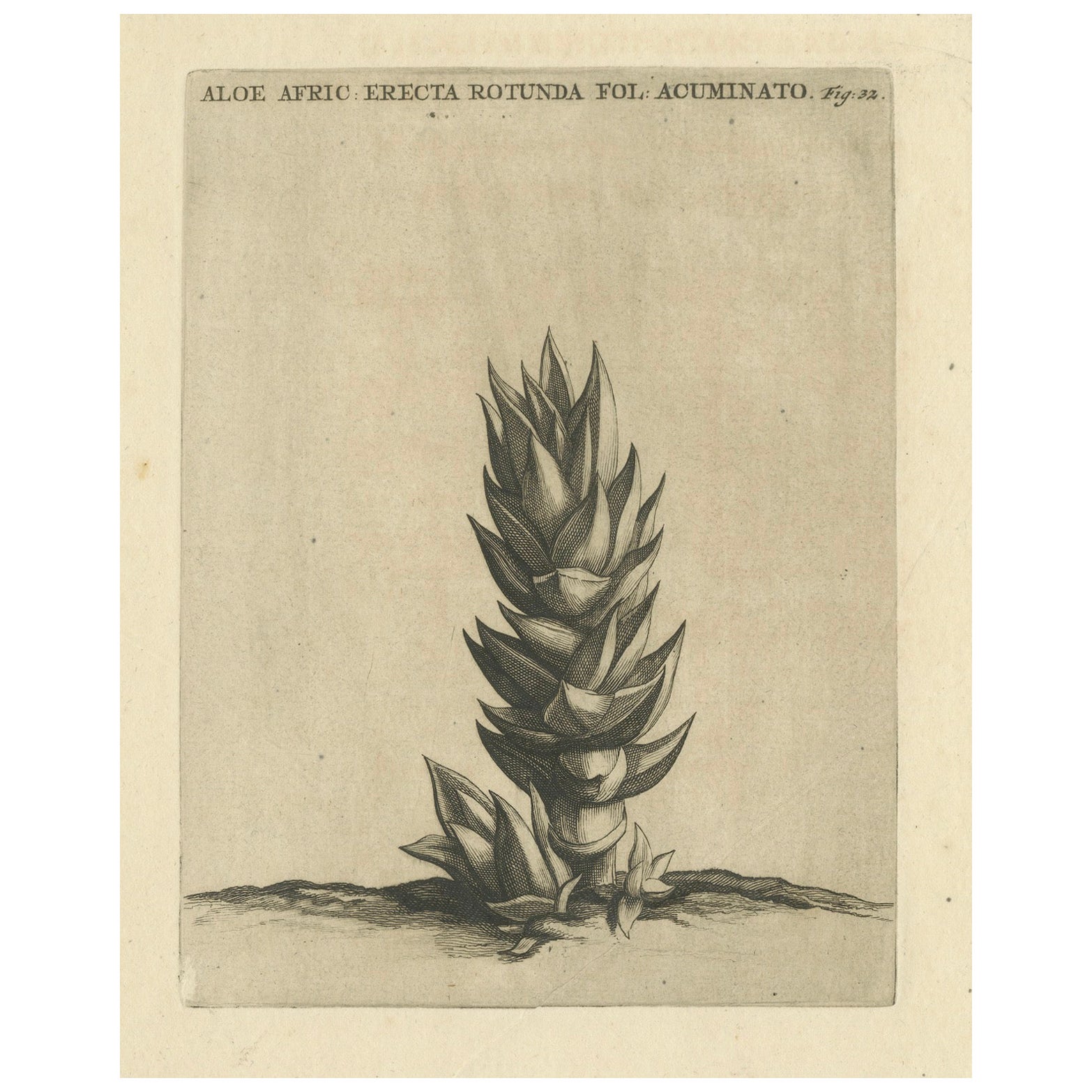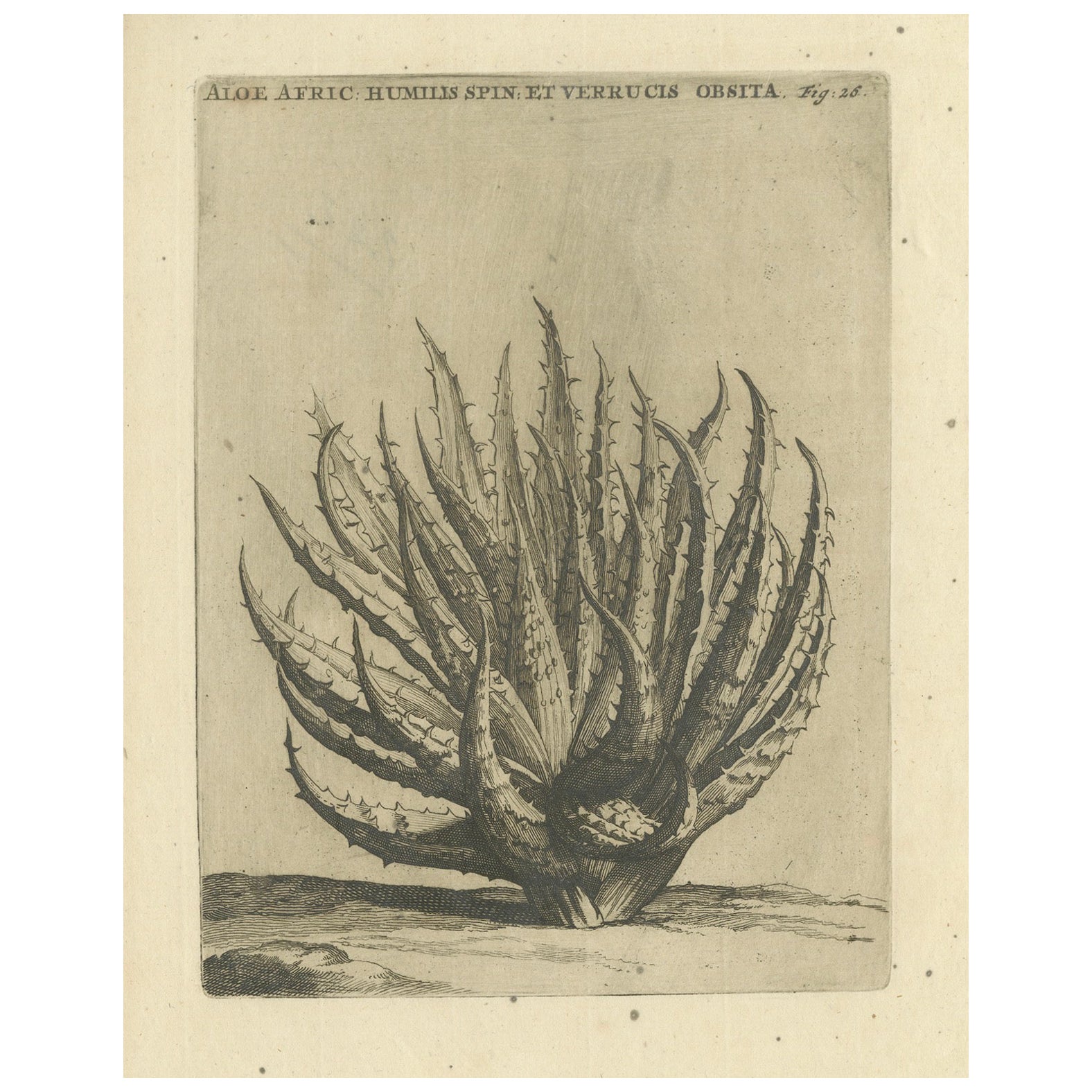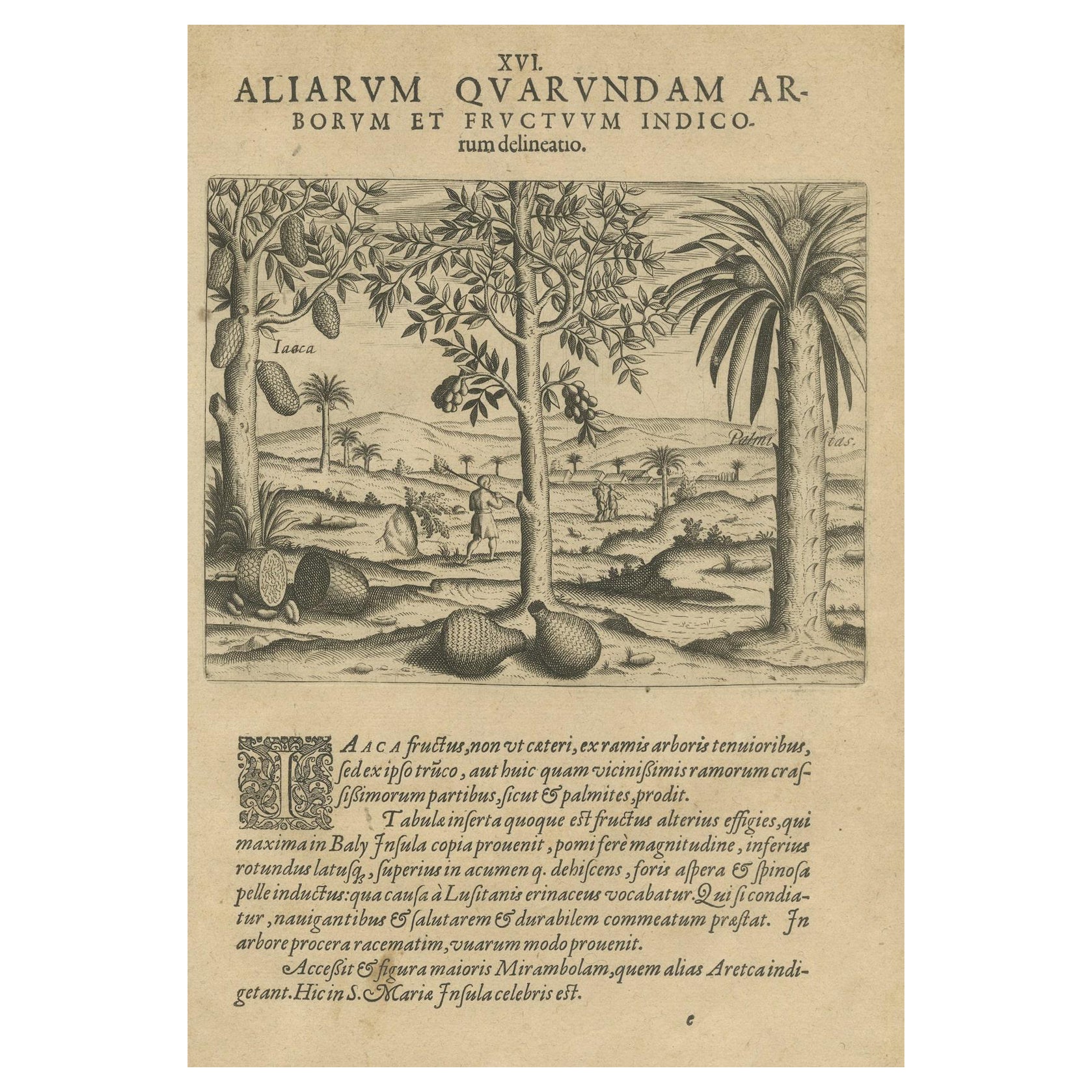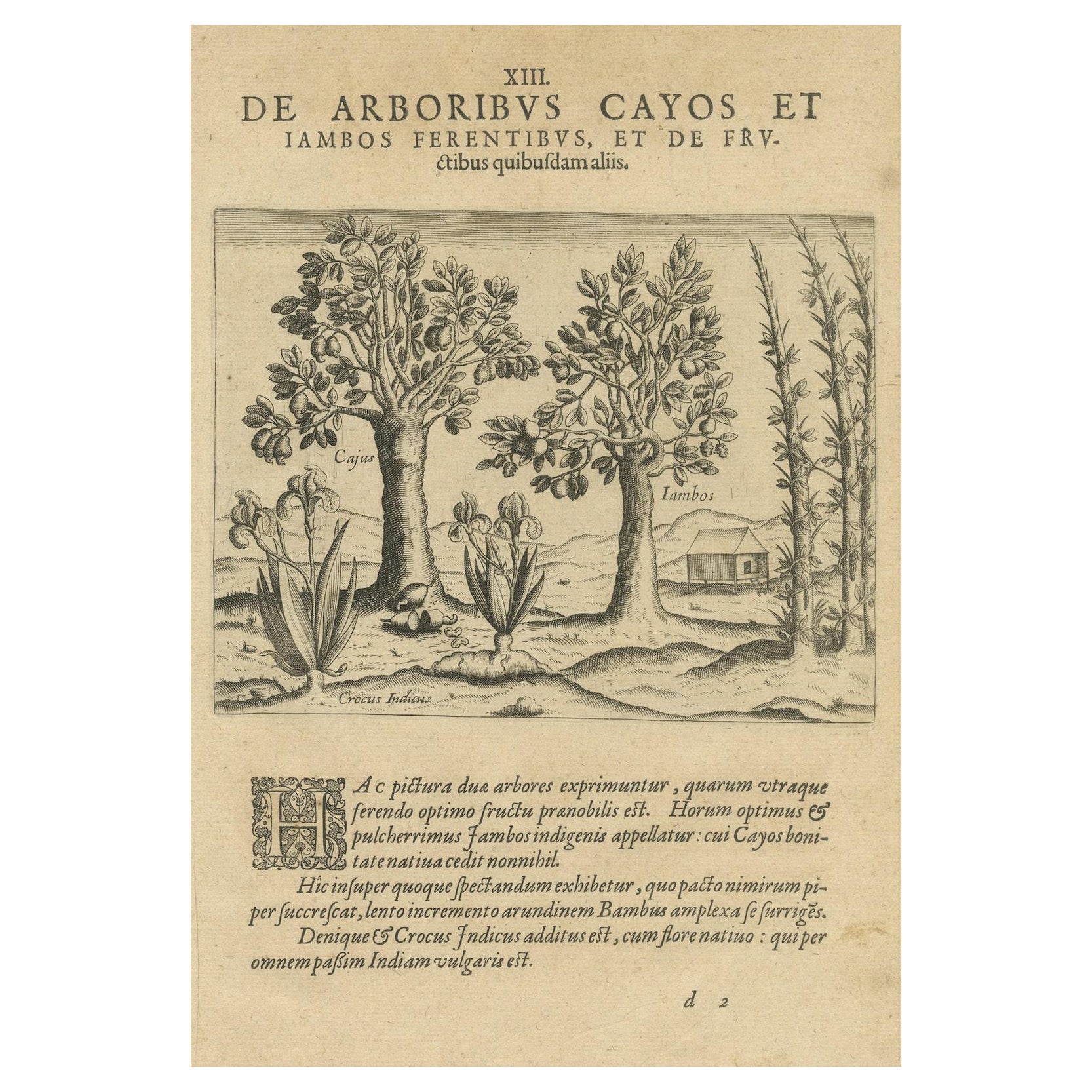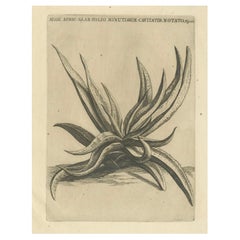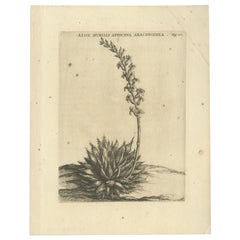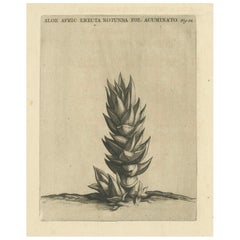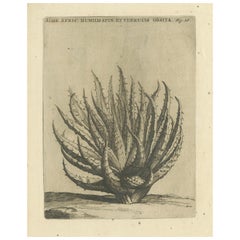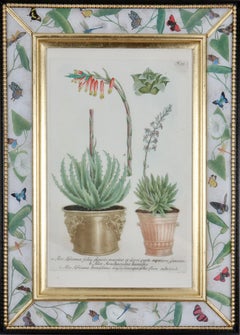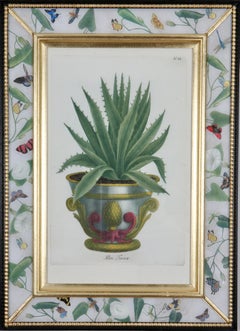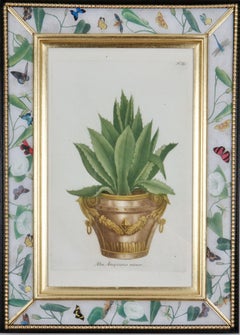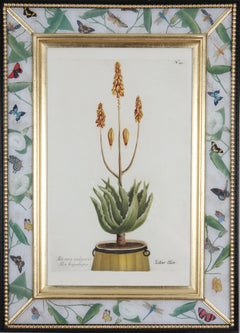Items Similar to New World Flora: Aloe, Maguey, and Mexican Plants in De Bry's 1601 Work
Want more images or videos?
Request additional images or videos from the seller
1 of 7
New World Flora: Aloe, Maguey, and Mexican Plants in De Bry's 1601 Work
$452.85
$566.0720% Off
£338.97
£423.7220% Off
€384
€48020% Off
CA$623.26
CA$779.0720% Off
A$694.68
A$868.3620% Off
CHF 364.48
CHF 455.6020% Off
MX$8,483.23
MX$10,604.0420% Off
NOK 4,615.07
NOK 5,768.8420% Off
SEK 4,361.94
SEK 5,452.4320% Off
DKK 2,923.28
DKK 3,654.1020% Off
About the Item
Title: "New World Flora: Aloe, Maguey, and Mexican Plants in De Bry's 1601 Work"
Description: This engraving by Theodore de Bry from 1601 offers a detailed depiction of various plants from the New World, specifically the aloe, maguey, and sycamore, known for their unique properties and uses. The aloe is shown with its succulent leaves, a plant known for its healing sap. The maguey, also known as agave, stands out with its large rosettes of tough, spiky leaves, a vital plant in Mexican culture for producing pulque and later tequila. The sycamore, with its broad leaves and distinctive fruit, adds to the diversity of this botanical collection.
These illustrations were crucial in introducing the botanical richness of the Americas to European audiences. De Bry's collection allowed Europeans to visualize and learn about plants that were otherwise unknown to them, contributing significantly to the botanical and economic knowledge of the time.
Translation of the Latin text:
"Aloe or sempervivum is found in great abundance in Agua de Sanbras and grows in saltiness surging with green force. The Maguey tree, also called by another name Metlmenuncupatum, first sprouted from Mexico. The Sycamore in Mayo Impula grew up, the juice is not entirely sweet. The fruit bears all seedless."
The engraving is a page from Part IV of de Bry's "Petits Voyages," which narrates significant expeditions to the East Indies, including those led by Jan Juygen van Linschoten and Cornelis de Houtman between 1595-97, as well as the journey by Jacob van Neck and Wybrandt van Warwijck in 1598-99. These works were not merely artistic endeavors but also ethnographic records, showcasing indigenous peoples, fauna, flora, and the diverse riches of lands like India, Madagascar, and the East Indies.
Though Theodore de Bry began this ambitious project, it was continued posthumously by his family and later completed by his son-in-law, Matthaus Merian, in 1644. This particular engraving, rich in detail and drama, offers a window into the perilous and wondrous experiences of early explorers, and the ways in which these moments were captured and communicated to a European audience hungry for knowledge of the wider world.
- Dimensions:Height: 11.82 in (30 cm)Width: 7.88 in (20 cm)Depth: 0 in (0.02 mm)
- Materials and Techniques:Paper,Engraved
- Period:Early 17th Century
- Date of Manufacture:1601
- Condition:The condition of the print is fair to good, considering its age of over 400 years. Light browning mainly around the edges. One corner chipped, otherwise fine. Please study this image carefully.
- Seller Location:Langweer, NL
- Reference Number:Seller: BG-13596-551stDibs: LU3054337756612
About the Seller
5.0
Recognized Seller
These prestigious sellers are industry leaders and represent the highest echelon for item quality and design.
Platinum Seller
Premium sellers with a 4.7+ rating and 24-hour response times
Established in 2009
1stDibs seller since 2017
2,513 sales on 1stDibs
Typical response time: <1 hour
- ShippingRetrieving quote...Shipping from: Langweer, Netherlands
- Return Policy
Authenticity Guarantee
In the unlikely event there’s an issue with an item’s authenticity, contact us within 1 year for a full refund. DetailsMoney-Back Guarantee
If your item is not as described, is damaged in transit, or does not arrive, contact us within 7 days for a full refund. Details24-Hour Cancellation
You have a 24-hour grace period in which to reconsider your purchase, with no questions asked.Vetted Professional Sellers
Our world-class sellers must adhere to strict standards for service and quality, maintaining the integrity of our listings.Price-Match Guarantee
If you find that a seller listed the same item for a lower price elsewhere, we’ll match it.Trusted Global Delivery
Our best-in-class carrier network provides specialized shipping options worldwide, including custom delivery.More From This Seller
View AllBotanical Engraving of African Aloe from Commelin’s "Praeludia Botanica", 1703
Located in Langweer, NL
African Aloe Botanical Engraving from Caspar Commelin’s "Horti Medici Amstelaedamensis," 1706
This engraving is possibly a botanical illustration from Caspar Commelin's "Praeludia B...
Category
Antique Early 1700s Prints
Materials
Paper
$273 Sale Price
20% Off
Aloe Humilis Africana Botanical Engraving from Caspar Commelin's Work, 1706
Located in Langweer, NL
Aloe Humilis Africana Botanical Engraving from Caspar Commelin's Work, 1706
This engraving is possibly a botanical illustration from Caspar Commelin's "Praeludia Botanica," publishe...
Category
Antique Early 1700s Prints
Materials
Paper
$273 Sale Price
20% Off
Botanical Engraving of Aloe Afric Erecta from Caspar Commelin's Work, 1706
Located in Langweer, NL
Botanical Engraving of Aloe Afric Erecta from Caspar Commelin's Work, 1706
This engraving is likely a botanical illustration from Caspar Commelin's "Praeludia Botanica," published i...
Category
Antique Early 1700s Prints
Materials
Paper
$273 Sale Price
20% Off
Aloe Afric Humilis Botanical Engraving from Caspar Commelin’s Work, 1706
Located in Langweer, NL
Aloe Afric Humilis Botanical Engraving from Caspar Commelin’s Work, 1706
This engraving is possibly a botanical illustration from Caspar Commelin's "Praeludia Botanica," published i...
Category
Antique Early 1700s Prints
Materials
Paper
$273 Sale Price
20% Off
Tropical Abundance: The Jackfruit and Palm Trees in De Bry's 1601 Engraving
Located in Langweer, NL
"Tropical Abundance: The Jackfruit and Palm Trees in De Bry's 1601 Engraving"
Description: This remarkable 1601 engraving by Theodore de Bry illustrates the lush vegetation of India...
Category
Antique Early 17th Century Prints
Materials
Paper
$518 Sale Price
20% Off
Exotic Flora of the Indies: The Cajus and Jambos Trees Copper Engraved in 1601
Located in Langweer, NL
Title: "Exotic Flora of the Indies: The Cajus and Jambos Trees in De Bry's 1601 Engraving"
Description: This detailed engraving by Theodore de Bry, dating back to 1601, beautifully illustrates two tropical trees, the Cajus and the Jambos, both renowned for their delectable fruits in the regions of India. The Cajus tree, likely referring to what is known today as the cashew, is depicted with its distinctive fruit that dangles below the swollen pedicel, commonly called the cashew apple. The Jambos tree, with its lush, dense foliage and abundant fruiting, could be related to the rose apple, known for its fragrant, rose-scented fruit.
Included in the scene is a depiction of the Indian Crocus, adding a touch of the diverse understory vegetation of the tropical climate. The image conveys a peaceful coexistence with nature, as indicated by a modest dwelling in the background, suggesting the integration of these trees into the daily lives of the local inhabitants for both nourishment and commerce.
The text is in Latin, and here is the English translation:
"In this picture, two trees are shown, each of which bears the most excellent and noble fruit. The best of these is called the Jambos, native to the region, which the inhabitants call Cayos. On this tree, nothing of note is bestowed.
Moreover, this also represents a marvelous spectacle, in which the slow-growing cane bamboo surrounds itself. Finally, the Indian Crocus has been added, which blooms with its native flower; which is widespread throughout all of India."
De Bry's engravings were pivotal in bringing the natural wealth of the New World and the East Indies to the European imagination. His work not only served as an artistic endeavor but also as an educational tool that fed the European appetite for knowledge about the vast diversity of the world's flora and fauna. This engraving, with its precision and attention to botanical detail, remains a significant historical record of the natural world as seen through the lens of the early modern European...
Category
Antique Early 17th Century Prints
Materials
Paper
$518 Sale Price
20% Off
You May Also Like
Johann Weinmann: 18th Century Engraving of an aloe in a decorative pot.
Located in Richmond, GB
Hand-coloured mezzotint engravings of decorative urns with aloes and cacti from: ""Phytanthoza Iconographia"", c1739, presented in hand- made, parcel-gilt, ebonised and decalcomania...
Category
18th Century Figurative Drawings and Watercolors
Materials
Watercolor, Mezzotint
Johann Weinmann: 18th Century Engraving. Aloe in a Decorative pot.
Located in Richmond, GB
PRICE IS FOR EACH FRAMED PRINT.
Hand-coloured mezzotint engravings of decorative urns with aloes and cacti from: ""Phytanthoza Iconographia"", c1739, presented in hand- made, parce...
Category
18th Century Figurative Drawings and Watercolors
Materials
Watercolor, Mezzotint
Johann Weinmann: 18th Century Engraving of an aloe in a decorative pot.
Located in Richmond, GB
Hand-coloured mezzotint engravings of decorative urns with aloes and cacti from: ""Phytanthoza Iconographia"", c1739, presented in hand- made, parcel-gilt, ebonised and decalcomania...
Category
18th Century Figurative Drawings and Watercolors
Materials
Watercolor, Mezzotint
Johann Weinmann: 18th Century Engraving of an aloe in a decorative pot.
Located in Richmond, GB
Hand-coloured mezzotint engravings of decorative urns with aloes and cacti from: ""Phytanthoza Iconographia"", c1739, presented in hand- made, parcel-gilt, ebonised and decalcomania...
Category
18th Century Figurative Drawings and Watercolors
Materials
Watercolor, Mezzotint
Johann Weinmann: 18th Century Engravings of an aloe in a decorative pot.
Located in Richmond, GB
Hand-coloured mezzotint engravings of decorative urns with aloes and cacti from: ""Phytanthoza Iconographia"", c1739, presented in hand- made, parcel-gilt, ebonised and decalcomania...
Category
18th Century Figurative Drawings and Watercolors
Materials
Watercolor, Mezzotint
Johann Weinmann: 18th Century Engraving of an aloe in a decorative pot.
Located in Richmond, GB
PRICE IS FOR EACH FRAMED ITEM. MORE EXAMPLES AVAILABLE
Hand-coloured mezzotint engravings of decorative urns with aloes and cacti from: ""Phytanthoza Iconographia"", c1739, present...
Category
18th Century Figurative Drawings and Watercolors
Materials
Watercolor, Mezzotint
More Ways To Browse
Large Plant Stand
Heal And Son
Heal And Son Antique Furniture
Syria Jewelry
Tall Mid Century Modern Buffet
Tall Narrow Shelves
Tamil Nadu
Terracotta Sink
Thai Bamboo
Thai Dragons
Thai Statue Wood
Tibetan Buddha Statue
Tiffany Glass Mirror
Tin Horse
Tubular Chrome Shelf
Unglazed Clay Jar
Used Metal Storage Bins
Vaseline Uranium Glass
